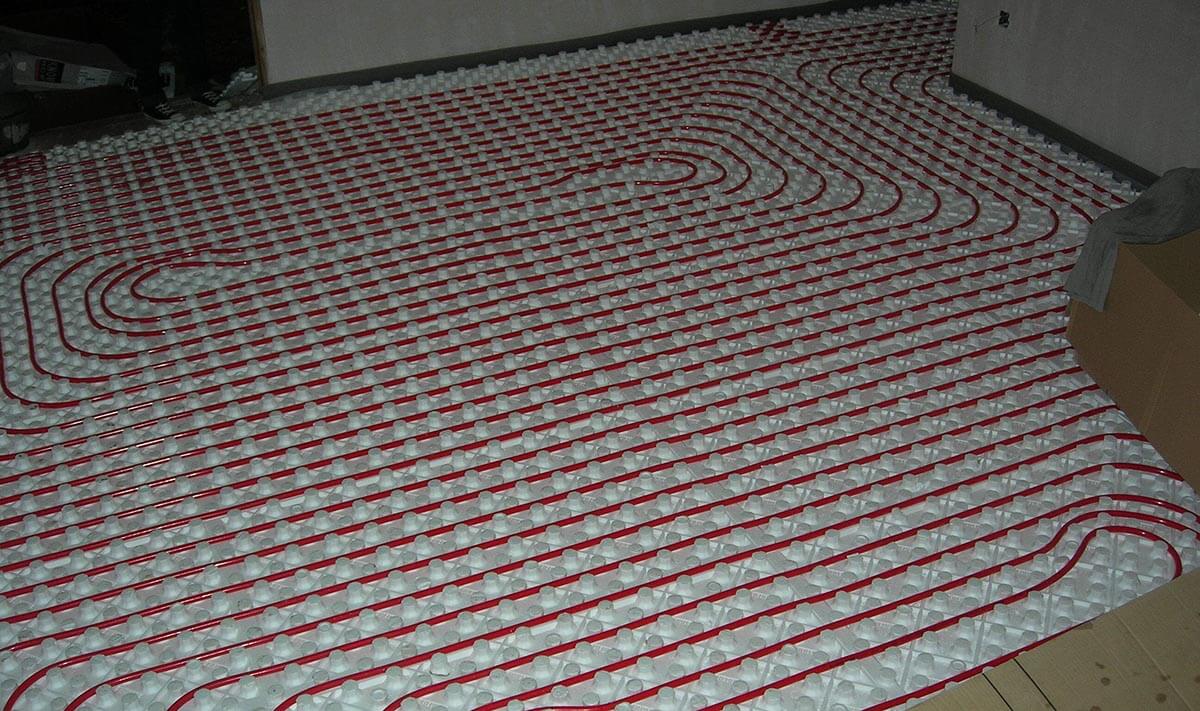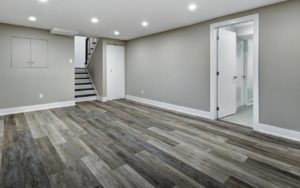The majestic beauty of Canada includes its gorgeous coastal scenery and world-class cities. As to the weather, the summers are short, with long, frigid winters following close behind. But the icy cold does nothing to stop millions of people from making their home in Canada, and in-floor heating installation helps fight off the deep chill.
You’ve come to the right place if you are considering getting a heated floor installed in your home. Keep reading for an overview of the radiant floor heating options we offer.
In Floor Heating vs. Forced Air Heating
If floor heating and conventional heating keep you warm, why do so many people choose a heated floor system? Comfort and lower energy costs are the two main reasons for this preference. Let’s compare both types of heating.
A forced air heating system basically works in a cycle. A thermostat sets the desired temperature, and a blower fan draws in air and warms it over a heat source. The warmed air is blown through vents, and the blower turns off when the temperature is reached.
As the heat naturally rises, the room cools down. When the room temperature drops, the blower starts again. It takes tons of energy to deal with these temperature fluctuations. Sky-high heating bills are a common complaint of homeowners who heat their homes with this method. Second to this is the discomfort of having ice-cold feet.
On the other hand, floor heating keeps the home at a consistent temperature, which reduces energy costs. The warmth rises evenly from the floor while cooler air stays at the ceiling level. This head-to-toe comfort is the main draw to heated floors.
Many people prefer in-floor heating because it doesn’t require air ducts that fill with dusty allergy triggers. Also, radiant heat requires no radiators or noisy vents, appealing to homeowners who want peace and quiet.
How Radiant Floor Heating Works
The primary difference between forced air and radiant floor heating systems is the vessel used to carry heat. Conventional heating uses air as the medium to distribute heat. On the other hand, the warmth of radiant heat is transferred from another surface. One way to think of it is how the heat from a stove or fireplace can be felt across a room.
Radiant floors deliver warmth from a source located under the floor. Radiant floor heating systems are named for the source that contains the heat. The three types basic of radiant floors are:
- Air
- Electric
- Hydronic (hot water)
Each type of radiant floor has different uses depending on where they are installed. They also vary in price. If you want more information about the different types of radiant floors, contact us and let our experts guide you through choosing the type of radiant floor you need.
Heated Floor Installation Methods
There are two basic ways to have a heated floor installed. Although the two methods are similar, they differ in application. These differences can make one preferable over the other for certain customers. The two types of radiant floor installation are:
- Wet installation. This type of heated floor uses the large thermal mass created by a concrete slab over a wooden subfloor. Heating cables or tubes are embedded in the concrete. Wet installations are ideal for storing heat from solar energy because of the thickness of the concrete.
- Dry installation. This method involves sandwiching radiant floor heating tubing between layers of plywood. The tubing can also be attached under a subfloor or finished floor. Although dry installation can be less expensive, this heating system must operate at a higher temperature.
Any type of installation needs to be done correctly. An inefficient floor heating system can cost you money. It may not work at all if there has been unsuitable preparation or insulation.
Don’t be tempted to install your own radiant heating system if you are not experienced. Instead, meet with our installers for professional service.
Tube Heating Application
Tube heating is the most popular and least expensive radiant system designed to heat an entire house. It works with tubes that are filled with water heated to 37.78 to 48.89 degrees Celsius. The tubes are installed beneath the floor. They can be embedded in concrete, stapled under subflooring, or placed in specially designed panels.
Changes in moisture can affect the type of flooring above your tube heating. You should have a professional installer assess your floors to recommend whether hardwood, vinyl, carpeting, or other flooring is suitable for your installation.
Enjoy a Heated Floor in Basement Spaces
You probably already have an idea which rooms you want radiant floor heating installed in your house. Bedrooms and bathrooms are usually the first to get heated floors because that’s where you’re likely to walk barefoot.
However, imagine how much more living space you’ll have with a heated floor in the basement areas of your home. With radiant floors in the basement, you can say goodbye to space heaters and cold feet whether you use your basement for work or play. Ask us about which radiant heating floor systems are suitable for this space in your home.
Let’s Talk
We hope this article has provided you with helpful information about in-floor heating installation. Of course, we cannot cover everything here, but hopefully, you have a better idea of what’s involved.
It will be our pleasure to talk with you and answer any questions you may have. Most of our customers want to know what a radiant floor will cost. Many factors will affect the cost and timeline for the completion of your heated floor installation. Some of them include:
- The type of installation you choose
- Your budget for radiant floor heating
- The location and size of your home
- Whether an existing radiant heating system is in place
- Room(s) where you want heated floor installation
- Floor covering
- Cost for subcontractors, if needed
We encourage you to contact us to discuss more details about floor heating solutions appropriate for your home. At MT Drains & Plumbing, we are committed to providing you with a radiant floor that you will enjoy for many years to come.






